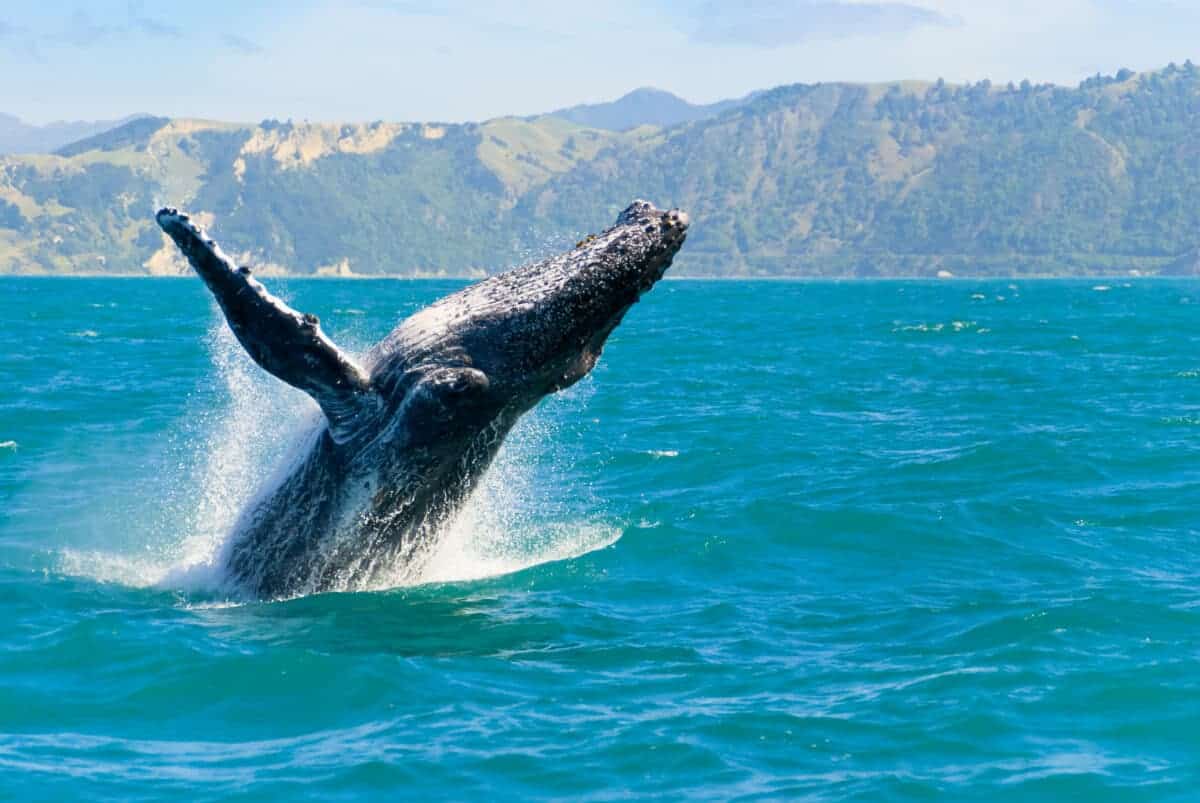For the very first time, cinematographers have managed to document the extraordinary spectacle of a humpback whale giving birth, marking a momentous occasion in the realm of marine research. This awe-inspiring event unfolded in Maui, where scientists, both locally and globally, have only previously captured glimpses of a handful of female humpback whales with calf flukes protruding—an indicator that the labor process had commenced. However, the entire birthing process had remained an elusive and uncharted territory, until now.

What makes this event exceptionally meaningful is that, from start to finish, it represents the inaugural instance of a complete humpback whale birth being successfully captured on camera. This groundbreaking footage provides scientists and enthusiasts alike with an unprecedented opportunity to witness and study the intricacies of this natural phenomenon, shedding new light on the mysteries surrounding the birth process of these majestic marine creatures.
Motherly Care: Tender Bonds with Calves
One of the most heartwarming aspects of humpback whale behavior is the strong maternal bond between mother and calf. Female humpbacks invest considerable time and energy in nurturing their offspring. The gestation period lasts for about 11 months, and mothers give birth to a single calf, usually during the winter months in warmer waters. The newborn calves are not only adorable but also vulnerable, relying on their mothers for protection and nourishment.

Humpback whale mothers are known for their tender care, guiding their calves through their early stages of life. The mother and calf share a close bond, with the mother providing milk for the calf and teaching it essential survival skills. This maternal dedication is crucial for the calf’s development and sets the foundation for the intricate social behaviors exhibited by humpback whales.
The Lifespan of Humpback Whales
Humpback whales are known for their remarkable longevity in the marine world. On average, these majestic creatures can live up to 50 years, although some individuals have been recorded to exceed this lifespan. Their extended life expectancy allows for a wealth of experiences, including numerous migrations, breeding cycles, and interactions within their complex social structures.
Dietary Habits: Masters of Filter Feeding

Humpback whales are baleen whales, a category of mysticetes distinguished by the baleen plates in their mouths, used for filter feeding. Their diet primarily consists of small schooling fish, krill, and plankton. Despite their massive size, humpback whales are graceful filter feeders. They engulf large quantities of water and then use their baleen plates to filter out the prey, allowing them to sustain their massive bodies with relatively small marine life.
Global Wanderers: Humpback Whale Migration
Humpback whales are renowned for their extensive migration journeys. These marine nomads cover vast distances, navigating between feeding and breeding grounds. During the feeding season, humpbacks can be found in colder, nutrient-rich polar waters, while breeding and calving take place in warmer tropical or subtropical waters. Their migratory patterns are among the longest of any mammal, with some individuals covering up to 5,000 miles in a single journey.
The Social World of Humpback Whales

Highly social beings, they display complex behaviors that include singing, breaching, and lobtailing. Their haunting songs, often associated with mating rituals, can travel vast distances underwater and are believed to play a role in communication and navigation. The social structure of humpback whale groups, or pods, is dynamic, and individuals may form bonds that last throughout their lives.
As we witness the extraordinary footage of a humpback whale giving birth, we are not merely observing a rare event but gaining a deeper understanding of the life cycles and behaviors that define these magnificent creatures. From their impressive lifespan to their nomadic wanderings, from their refined feeding techniques to the nurturing care of mothers, humpback whales continue to unveil the marvels of the marine world, leaving us in awe of their grace and resilience.
Join our Forum for free today!

- Second American Killed by Elephant in Zambia This Year - July 22, 2024
- Elderly Man Kills Grizzly Bear in Montana - July 22, 2024
- Missing Cat Found Weeks Later, 40 Miles Away - July 21, 2024


